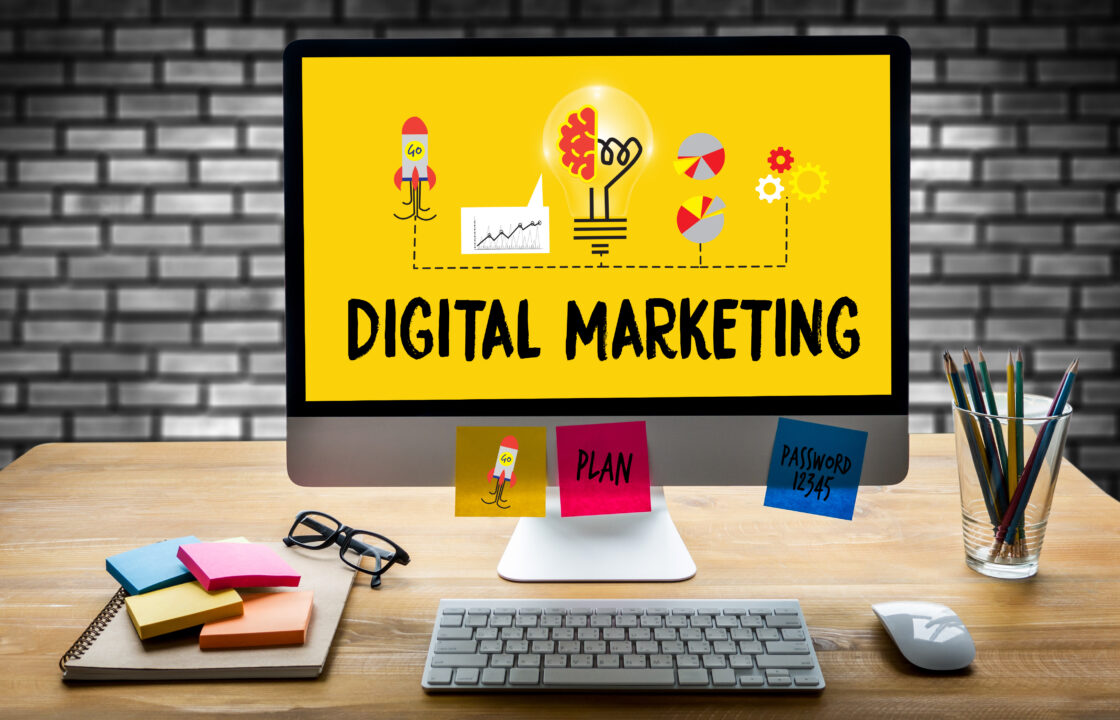Five tips for digital marketing of the future

In today’s world, we are receiving and therefore processing more information than ever. Researchers found that we process up to 74GB of information through all kinds of media, every single day. Digitization changes the game continuously. This has huge implications on the way we live and work. Because how can you make sure your organization adapts to these digital changes and maintains connected with your stakeholders? We give you 5 tips for (digital) marketing of the future.
#1: Know your audience
Firstly, knowing your audience is key. This might be stating the obvious, but organizations often forget that changes within society go hand in hand with changing consumers. You must reach, engage, and maintain your target audience. Think about who they are, what they value and what you can add to your life as an organisation. Chief Media Officer at JPMorgan Chase, Tracy-Ann Lim, identifies a shift in what people need from us. It’s not about transactions anymore. Nowadays, people want experiences.
Especially the younger generation needs to be targeted differently than the older audience. Lim: ‘What got you here, won’t get you there.’ By saying this, she means that the younger generation has entirely different preferences and therefore makes different choices. They have another way of connecting with people and brands. It’s important to research and analyze your audience and all their different generation and group specific needs.
#2: Intertwine your purpose with your products
That brings us to our second tip: intertwine your purpose with your products. The future of marketing is not just either/or. The distinction between products and service marketing versus corporate impact marketing no longer exists. These barriers are blended. To reach people, you need to combine what you have, with what you stand for.
The Finnish electronics company HMD shows us how it’s done. They strive for accessibility and sustainability of mobile technology to enhance the everyday lives of everyone around the world. With their subscriptions for Nokia phones, they reduce e-waste. Their devices are meant to last instead of ending up in a landfill within a year. Chief Marketing Officer HMD Global, Lars Sillerbauer, declares it’s high time for a disruption of the tech and mobile market: ‘We cannot continue to buy new phones every year. At HMD we want to reduce our footprint on the planet and create a good conscience about the climate.’
#3: Think about the right channels and tone
Once your purpose and product are clear and ready to be communicated, the next step is: how and where? Lim feels it’s an organisation’s duty to bring good and trustworthy information to your audience. Especially for the younger generation. Because, however questionable it may be, they do visit social media for advice, information, news, and so on. Instead of waiting for them to come to you, organisations owe it to their audience to deliver the right message. In doing so, make sure there’s authenticity in what you’re saying. In this digital age, consumers are craving authenticity, Lim says.
For Sillerbauer, it comes down to trust. To gain the consumer’s trust, you need to make sure your audience feels safe. Not just around your brand, but around your entire ecosystem: your devices, services, platform, organisation and culture. This can be a challenge, with today’s weighing scale between maintaining privacy and targeting via personalization.
#4: Don’t be creepy, be valuable
Lim sees it more like building blocks, instead of a balancing act. She says: ‘Safety first. Privacy should be fundamental to everything you do. Only after data safety and ownership is secured, comes personalization.’ She identifies a distinction between the logged in experience and the prospect consumers. Key is: don’t be creepy.
Once your customer is logged in, you know them. When knowing what someone needs, target these. Think about how you can help them. Make sure to add value to their lives through your services and products. Prospect consumers might be trickier. Again, don’t be creepy. Lim advices to work off signals. Give them a good first impression. Make sure they have seamless experience with your brand, and work from there.
#5: Incorporate agility into policy
If the past years taught us one thing, it’s flexibility. We saw that the companies who were able to adapt, survive crises. Now it’s time to apply your lessons learned from the past. For example, Lim says, we were all stuck in contracts or deals didn’t really needed but couldn’t get out of. To survive in this age of digitization, it’s crucial to “kill hobbies”: nice to haves need to go. Focus on what really matters.
On another note, Lim declares the words ‘audience’ and ‘campaign’ are not applicable to the future of marketing anymore. Audiences were once seen as passive, but today the opposite is true: people are not sitting back, waiting to hear what you have to say. As an organisation, you must reach them, engage with them and gain their trust and enthusiasm. This used to be done via campaigns. But Lim views this as a loaded word. It implies a beginning, a middle, and an end, which is not the way people live their lives anymore. Today, there exists a dialogue between organisations and their consumers. Therefore organisations need to be able to participate in, but more importantly anticipate on, this dialogue. Sillerbauer agrees. He urges organisations to be open to drive markets in a different way. “Exercise that change muscle. Be ready to start from scratch every single day.”





